🌱 Bay Area Community Gardens Spotlight: 15 Inspiring Spaces to Grow, Connect & Learn
- Garden Nerd
- Aug 11
- 5 min read
Why Community Gardens Matter in the Bay Area
There’s something magical about walking into a community garden. The scent of fresh basil, the chatter of neighbors swapping planting tips, the buzzing of bees over native flowers — it’s gardening, yes, but it’s also connection.
The Bay Area’s diverse microclimates make gardening here uniquely rewarding (and sometimes uniquely challenging). Community gardens help bridge those gaps by offering shared resources, collective wisdom, and a sense of belonging.
Whether you’re a seasoned grower or just starting your first tomato plant, these 15 standout gardens are worth a visit — not ranked, but each chosen for its community spirit, environmental leadership, and local charm.
1. Alemany Farm – San Francisco
Visit Website ↗

Why it’s special: The largest urban farm in San Francisco, Alemany Farm spans 3.5 acres and is dedicated to growing healthy food for the community while teaching sustainable farming practices. Locals love the volunteer days, where anyone can join in and learn hands-on skills. The farm also acts as a living classroom for schools and nonprofits.
• Type: Volunteer-based; open to all.
• When to Go: Volunteer days Mondays & Saturdays, 1–5 PM .
• Why Visit: Largest urban farm in SF with diverse crops, native habitat areas, and educational programs. Great place to roll up your sleeves and learn.
GrowBot says: "3.5 acres of green goodness right in SF? That’s like finding a tomato in a sea of concrete."
2. Lakeside Park Community Garden – Oakland
Visit Website ↗

Why it’s special: Nestled beside Lake Merritt, this garden offers a serene escape in the middle of the city. Gardeners say the proximity to the lake brings in pollinators like butterflies and bees in abundance. The shared compost program is a local favorite.
• Type: Public demonstration garden with communal spaces.
• When to Go: During park hours (generally dawn to dusk); check park site for updated schedule.
• Why Visit: Gorgeous setting by Lake Merritt with themed planting zones and educational outreach
3. Culinary Garden – Napa
Visit Website ↗

Why it’s special: Run by the Culinary Institute of America at Copia, this garden supplies fresh produce directly to their teaching kitchens. Locals admire its fusion of agriculture and culinary arts, and the garden tours often end with delicious tastings.
• Type: Institution-based (CIA at Copia) – not community plots.
• When to Go: By tour or reservation; check CNA website.
• Why Visit: Connects culinary arts with gardening—like seeing an edible menu come to life.
4. Berkeley Community Gardening Collective – Berkeley
Visit Website ↗
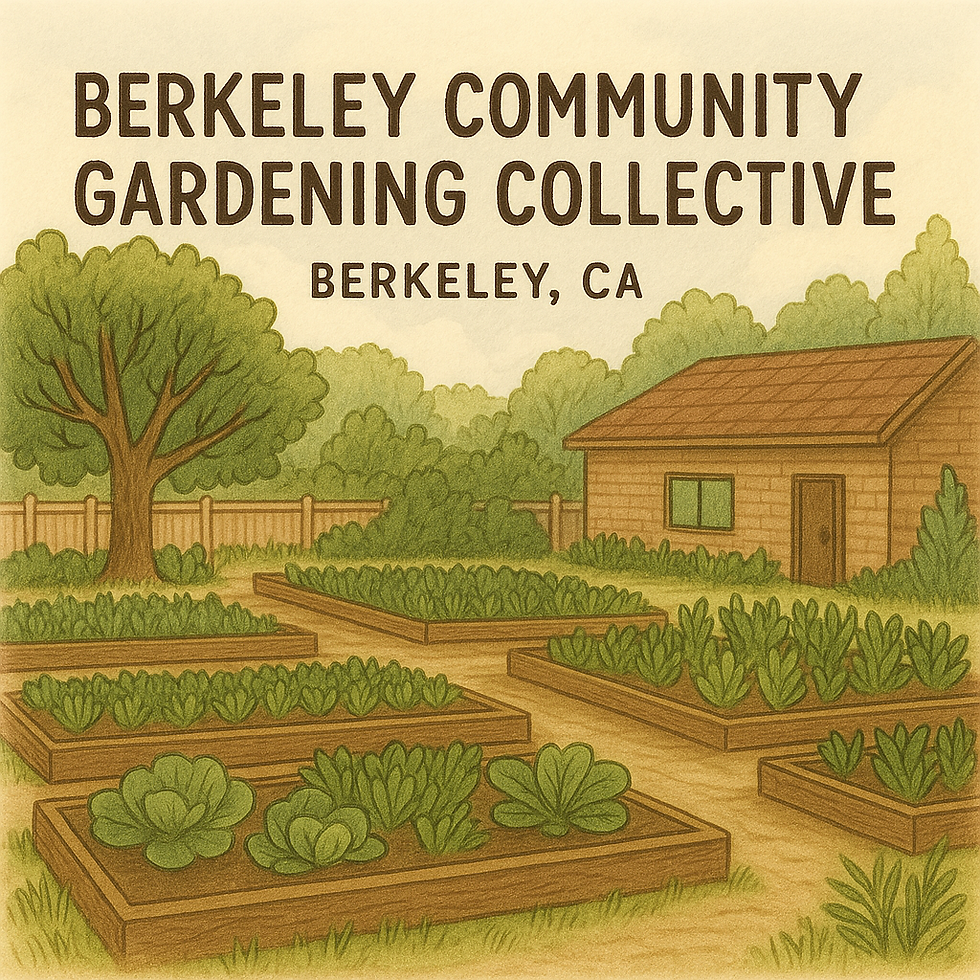
Why it’s special: Spread across multiple sites in the city, the collective offers affordable garden plots and supports sustainable urban agriculture. Berkeley residents praise its inclusivity and the workshops on permaculture and composting.
• Type: Rented plots within a network of sites.
• When to Go: Plot access year-round; workshops hosted periodically.
• Why Visit: Eclectic garden styles across sites, home to community skill-sharing and eco-events.
5. Beresford Park Community Garden – San Mateo
Visit Website ↗

Why it’s special: Located within one of San Mateo’s most beloved parks, this garden blends recreation and food growing. Families enjoy the easy access to both gardening and play spaces, making it a community hub on weekends.
• Type: Plot rentals for residents.
• When to Go: Likely accessed during park hours; check local site.
• Why Visit: Situated in a family-friendly park with strong community ties and multi-use amenities.
6. Fremont Community Garden – Fremont
Visit Website ↗
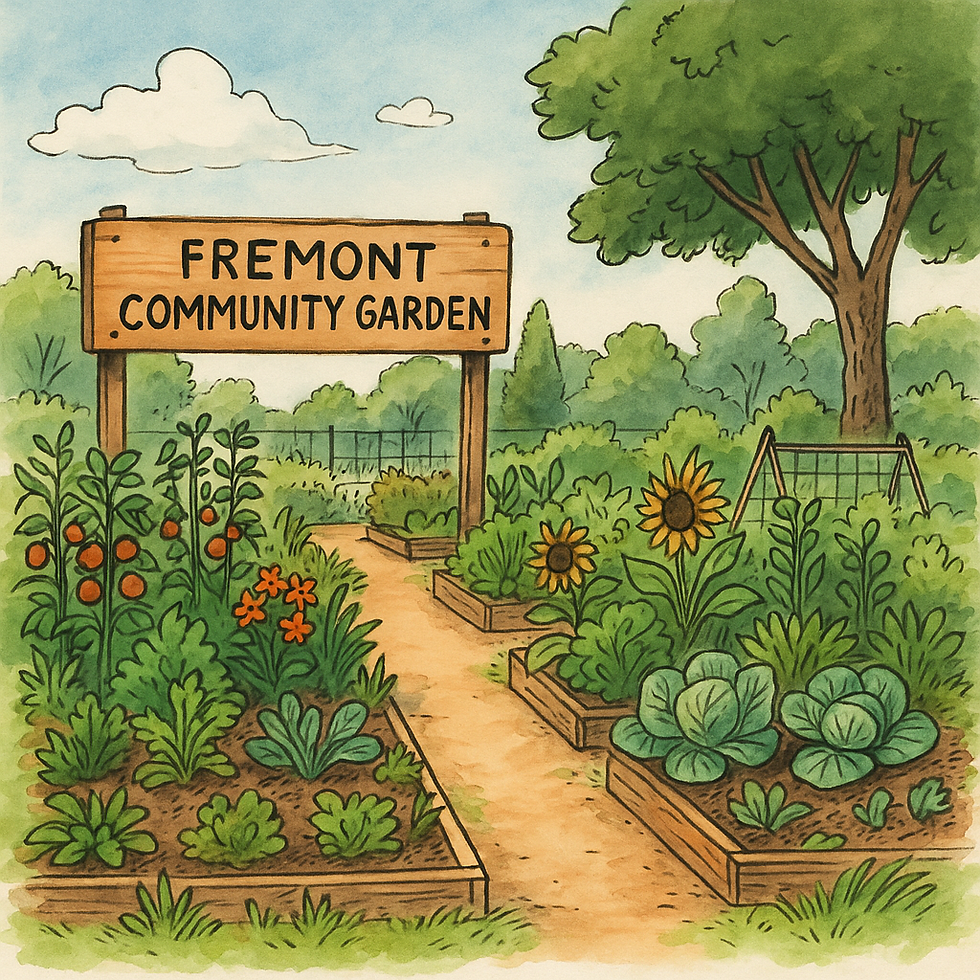
Why it’s special: This city-run garden offers individual plots and a communal herb garden. Residents appreciate the shaded seating areas, which double as social spots for sharing gardening tips.
• Type: Non-profit/community partner volunteer garden.
• When to Go: Volunteer shifts, classes—check LEAF site.
• Why Visit: Focuses on regenerative agriculture and soil health; hundreds of seedlings grown & donated.
7. Veggielution – San Jose
Visit Website ↗
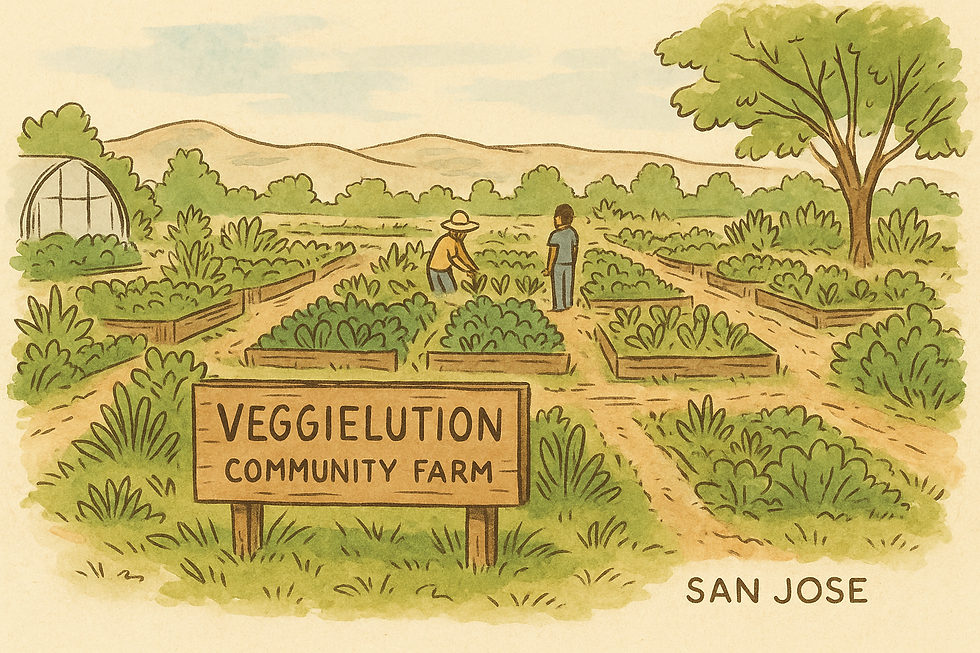
Why it’s special: Located in Emma Prusch Farm Park, Veggielution is more than a farm — it’s a community movement. Locals rave about the farm stand, youth programs, and multicultural food celebrations.
• Type: Volunteer-run urban farm + farm stand.
• When to Go: Volunteer Tue–Fri 8:30–12:30, Saturday 10–12:30 & 1:30–3 PM; Farm Stand Saturdays 10–2 PM.
• Why Visit: Vibrant community hub hosting seasonal cooking classes, youth gardens, and produce giveaways.
8. Collective Roots – East Palo Alto
Visit Website ↗

Why it’s special: This nonprofit focuses on food justice, connecting residents with the skills and resources to grow their own food. Locals value its emphasis on native plants and culturally relevant crops.
• Type: Non-profit community garden + compost hub.
• When to Go: Volunteer Thursday evenings and certain Saturdays; compost spot during farmers market.
• Why Visit: Driven by a food justice mission—connects neighbors to healthy produce and education.
9. Middle Green Community Garden – Hayward
Visit Website ↗

Why it’s special: Known for its diverse gardening styles, Middle Green is a reflection of Hayward’s multicultural community. Gardeners often share seeds and recipes, making it a place for cultural exchange.
• Type: Rented plots managed via Rec & Park District.
• When to Go: Plot use year-round; general area open daily.
• Why Visit: One of Hayward’s newer revamped gardens with educational workshops via Master Gardeners.
10. Fairfax Community Garden – Fairfax
Visit Website ↗

Why it’s special: Tucked among Marin’s redwoods, this garden has a peaceful, almost forest-like atmosphere. Locals enjoy the quiet, the shade, and the occasional deer sighting.
• Type: Rented individual plots & shared areas.
• When to Go: Monday–Thursday, 8:30 AM–12 PM & 1–5 PM. .
• Why Visit: Quiet, shady garden behind the library that’s great for both produce and peace.
11. Marin City Community Garden – Marin City
Visit Website ↗
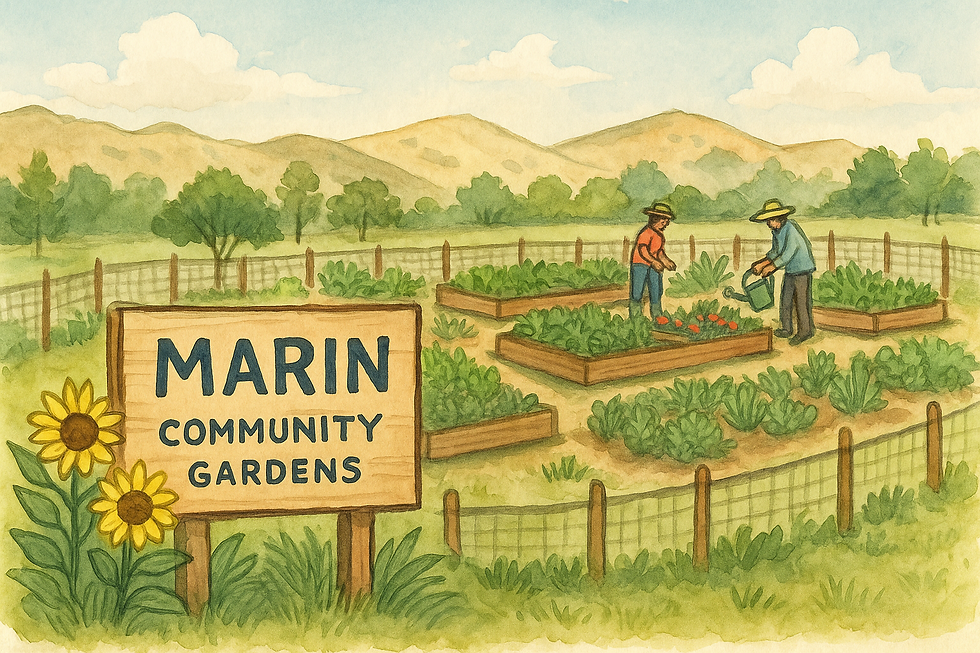
Why it’s special: A key part of local food sovereignty efforts, this garden focuses on education and accessibility. Residents value its role in providing fresh produce in an area with limited grocery options.
• Type: Open intergenerational plots (free participation).
• When to Go: Community hours likely during normal operational hours (9 AM–5 PM).
• Why Visit: Multi-age garden emphasizing cultural connection, learning, and social bonds.
12. Willow Road Community Garden (Belle Haven) – Menlo Park
Visit Website ↗
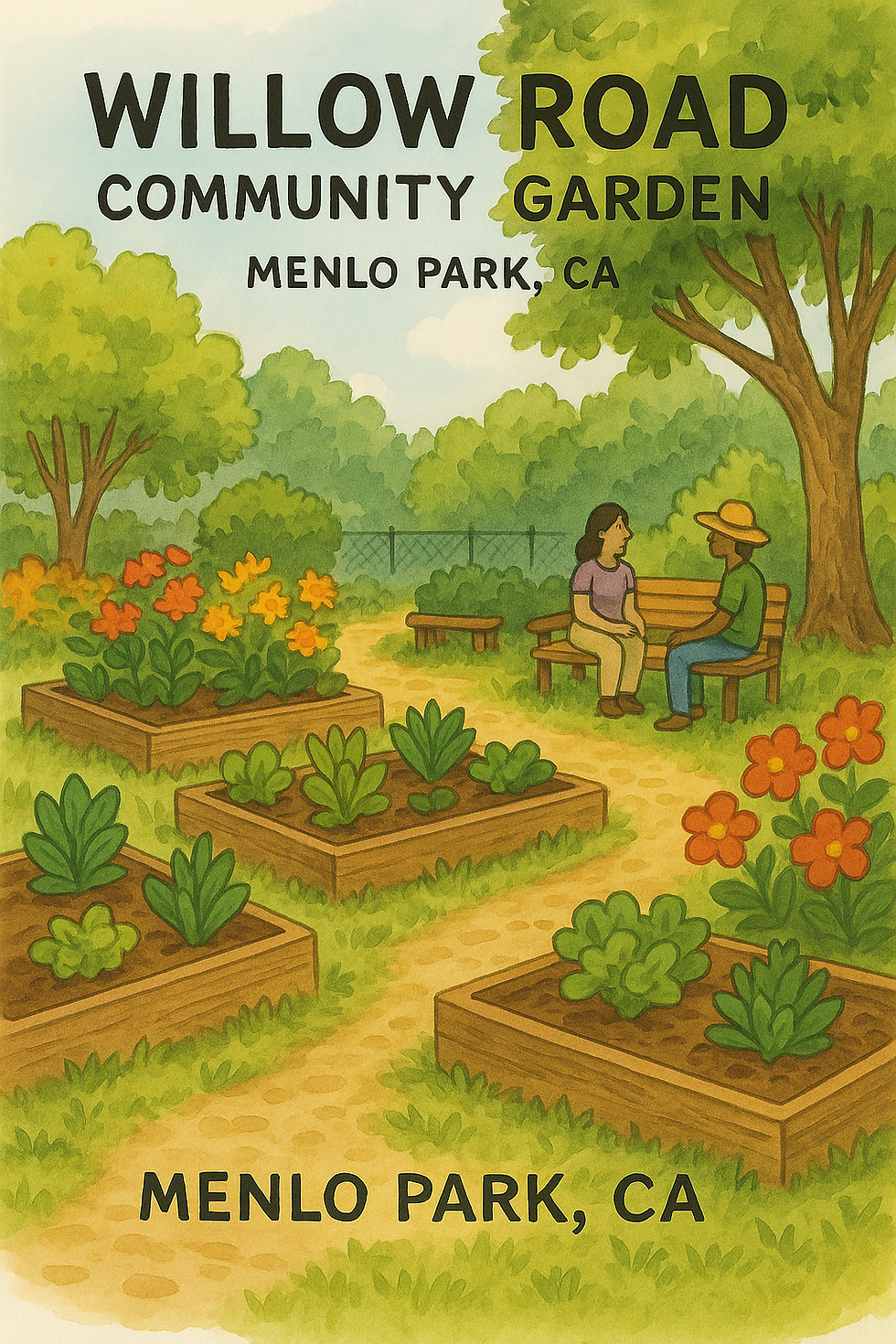
Why it’s special: Conveniently located for apartment dwellers, this garden offers small, manageable plots. Locals appreciate the mix of ornamental and edible plants, creating a colorful space.
• Type: Local plot rentals or volunteer-based.
• When to Go: Depends on Menlo Park schedule (amenities open during park hours).
• Why Visit: Small gardens embedded in neighborhoods—a great spot for quick inspiration and local charm.
13. SAGE Garden – Stanford University
Visit Website ↗
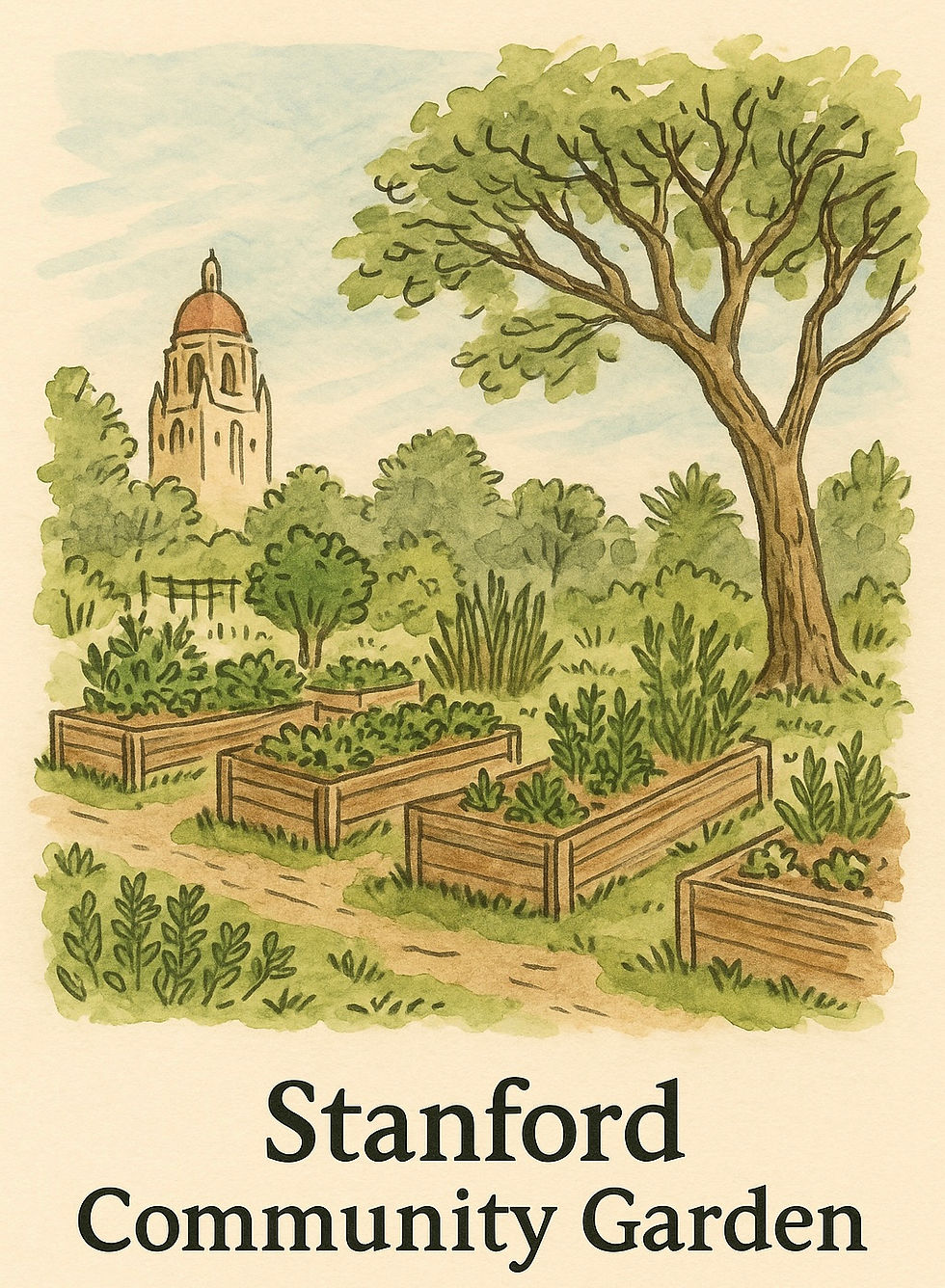
Why it’s special: Part of Stanford’s sustainability programs, SAGE Garden is both a research site and a community space. Students and locals collaborate here, testing new growing methods and sharing results.
• Type: University-managed farm with public educational programming.
• When to Go: Check Stanford calendars for tours or events.
• Why Visit: Serves as a model for sustainable agriculture—great for seeing research in action.
14. Solano Community Garden – Albany
Visit Website ↗
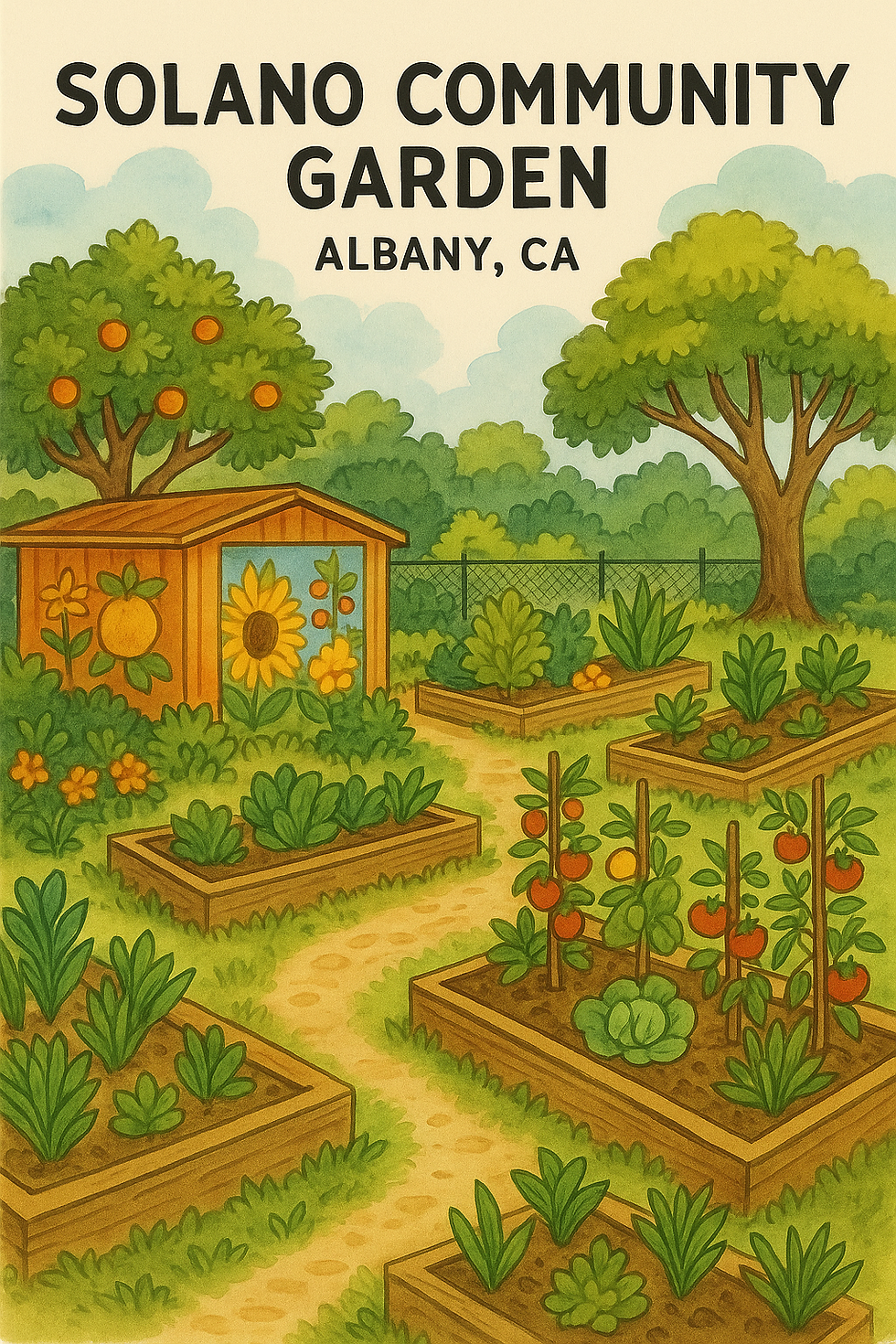
Why it’s special: Known for its cheerful mural and fruit tree plantings, this garden is a favorite spot for neighborhood picnics. Locals say it’s one of the most photogenic gardens in the East Bay.
• Type: Public volunteer plots and demo areas.
• When to Go: Typically open during Albany parks operating hours.
• Why Visit: Known for its cheerful murals, fruit trees, and community art collaborations.
15. El Cerrito Community Garden – El Cerrito
Visit Website ↗
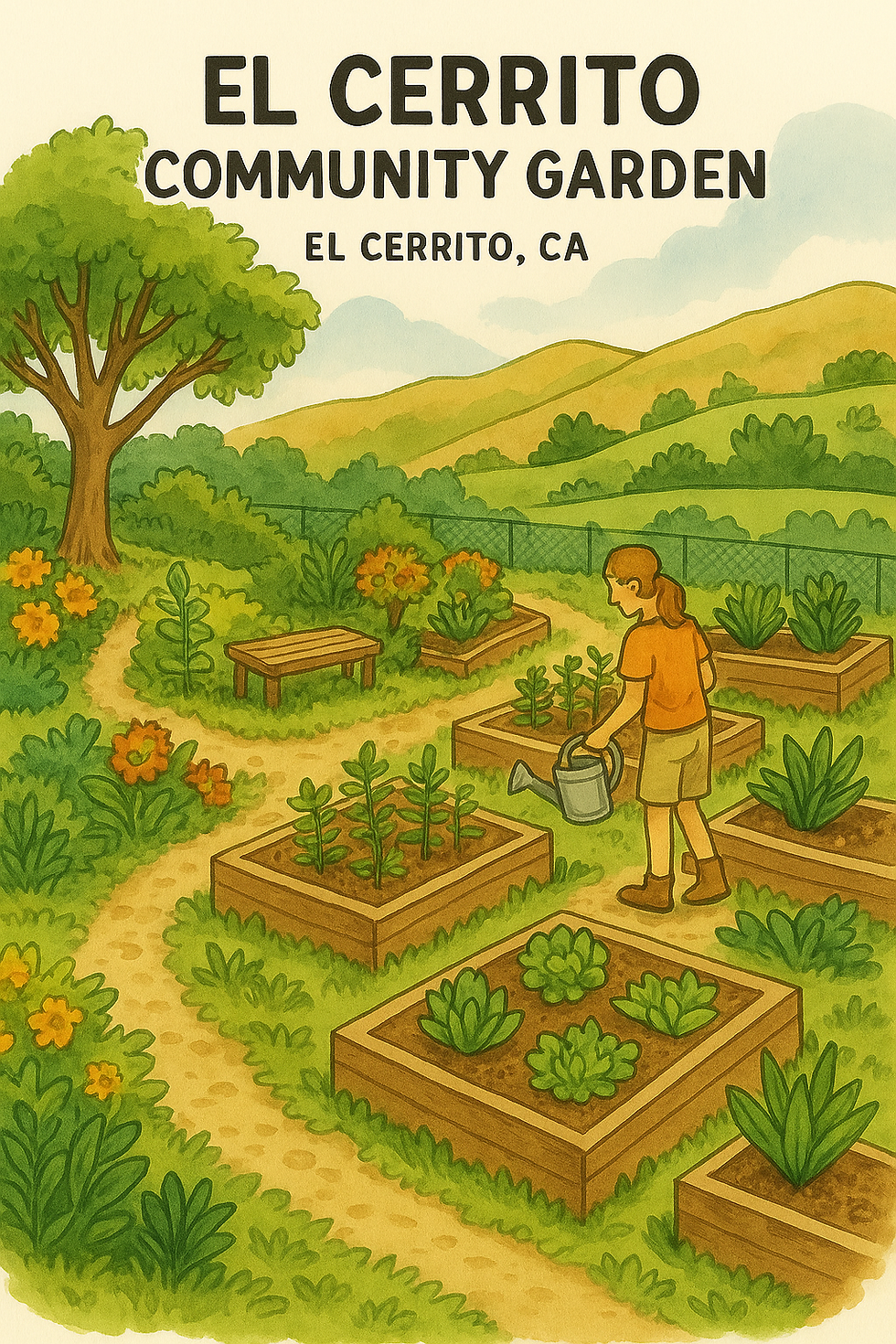
Why it’s special: Built on a slope, this garden offers stunning views and terraced growing spaces. Residents love the creative use of space and the sense of accomplishment that comes from gardening on challenging terrain.
• Type: Public garden via community programs or plot rentals.
• When to Go: Confirm via El Cerrito city website.
• Why Visit: Built on a slope with panoramic views—creative terraces make it stand out.
Final Thoughts
Community gardens are more than places to grow food — they’re places to grow connections. If one of these gardens sparks your interest, visit their site, sign up for a tour, or volunteer for a work day. The Bay Area gardening community is welcoming, diverse, and ready to help you put down roots — literally.
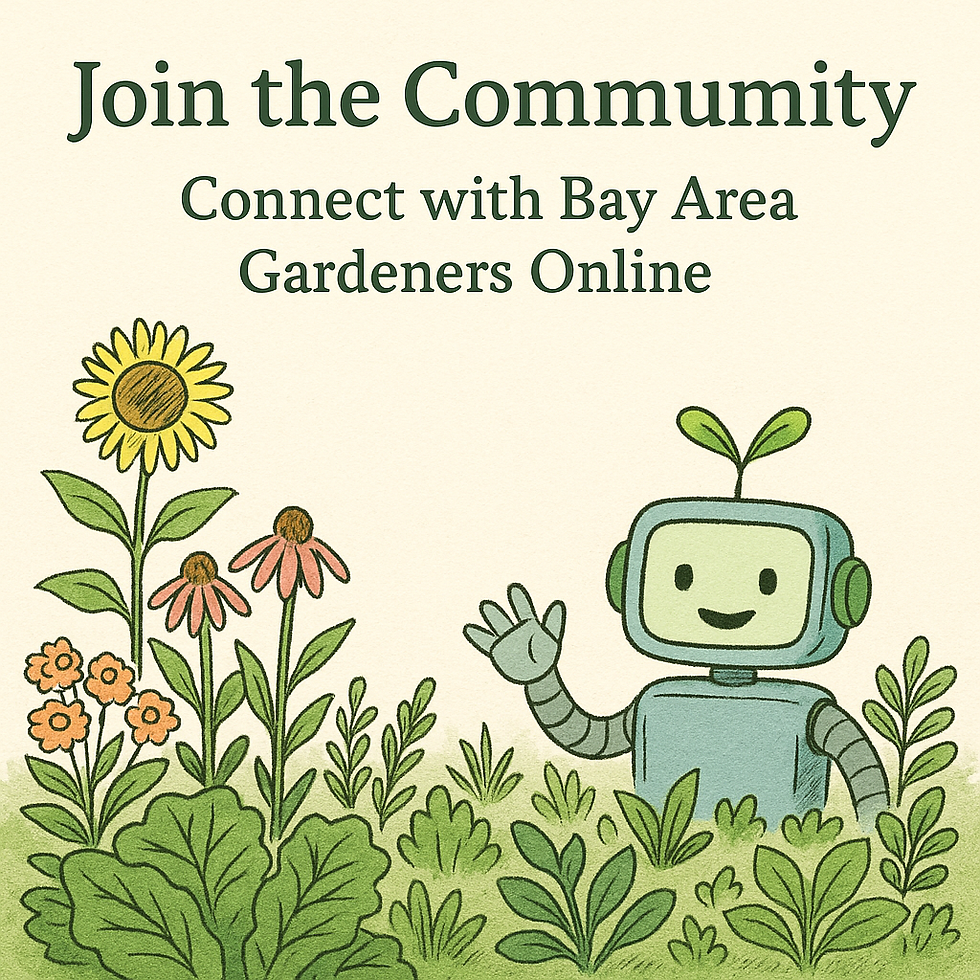
Comments